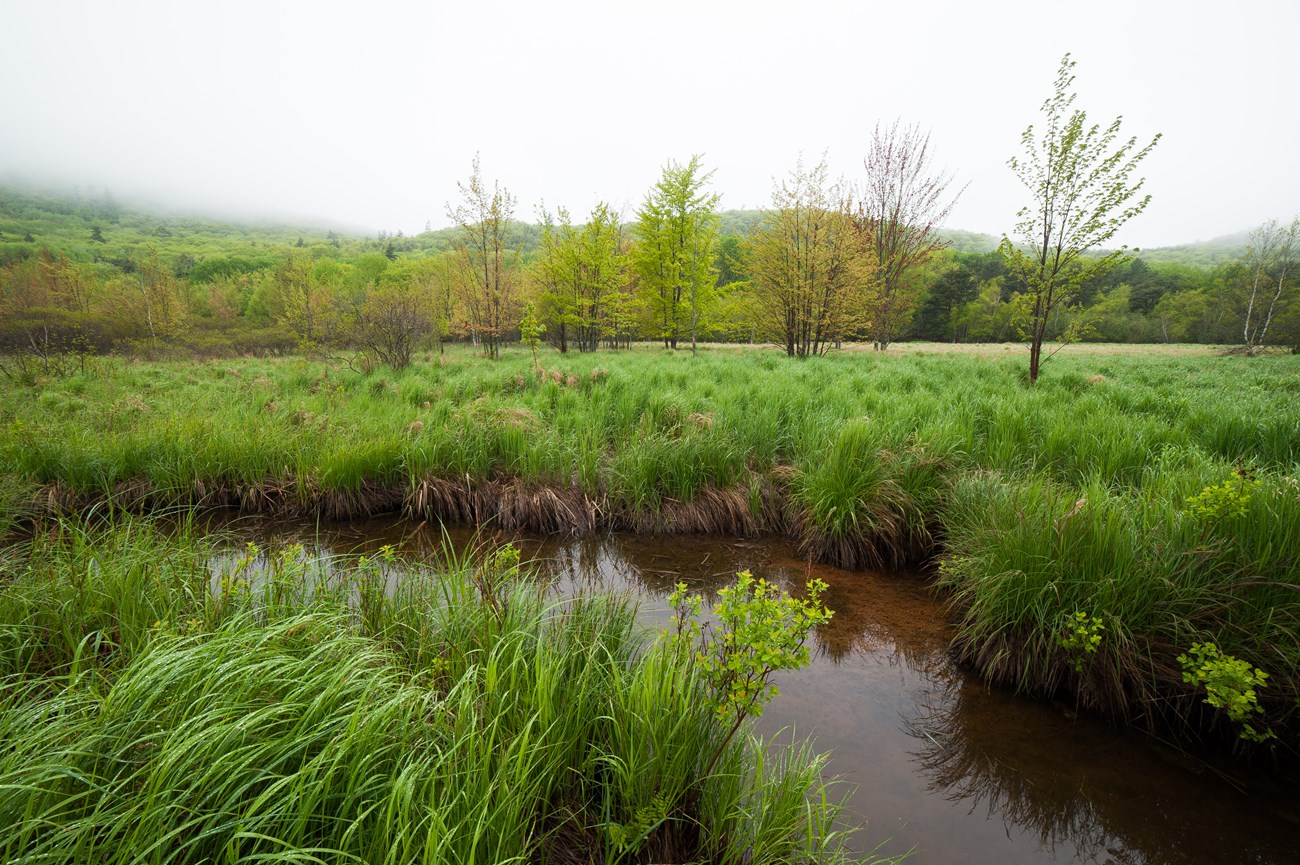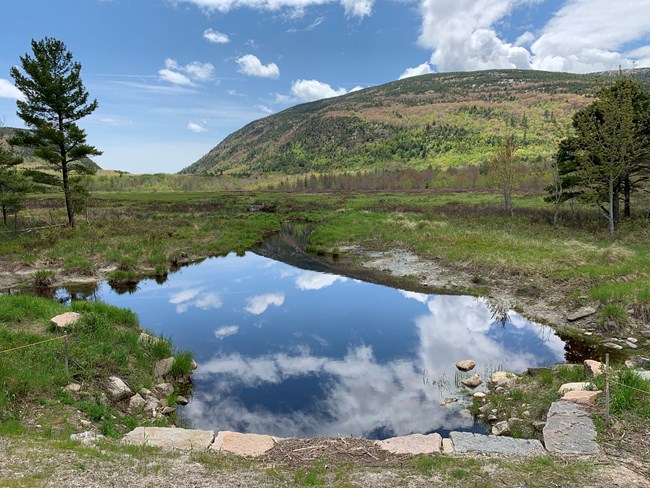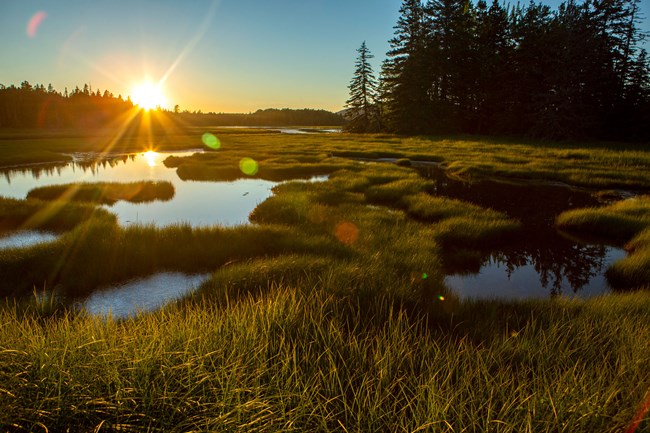
NPS photo by Kent Miller Over 20 percent of Acadia is classified as wetland. All classes of wetlands (swamps, marshes, and bogs) are found within the park. Some are freshwater, meaning they are fed by freshwater streams. Others are saltwater marshes which are located along inlets from the ocean. They all form the transition between land (terrestrial) and water (aquatic) environments. More Than Meets The EyeNot all of Acadia's wetlands are healthy. Poor sites, such as Great Meadow, have many invasive plant species (like glossy buckthorn), poor soil and water drainage. Climate change is further stressing wetland environments with warming temperatures, harder and more severe rain events combined with droughts, and changing seasonal rhythms. 
Great Meadow WetlandLocated adjacent to the Park Loop Road and the Sieur de Monts Spring area, the Great Meadow Wetland is part of a larger network of wetlands, streams, and ponds in the Cromwell Brook watershed, including the Tarn. Nestled at the base of Dorr Mountain, Park founder, George B. Dorr, focused much of his attention on this area and greatly modified it, adding greenhouses, trails and roads. This, coupled with prior modifications, greatly altered the flow of water through the wetland, impairing its ability to act as a wetland and allowing non-native species to thrive instead of freshwater plants. 
Bass Harbor MarshBass Harbor Marsh is located on the western side of Mount Desert Island and is the largest area of salt marsh in Acadia. A small estuary is formed where freshwater streams meet the sea, with brackish (part saltwater, part freshwater) conditions influenced by the twice-daily tides. Bass Harbor Marsh has been severely impacted by invasive plant species that have displaced the native species that support a greater diversity of wildlife. |
Last updated: May 10, 2024
